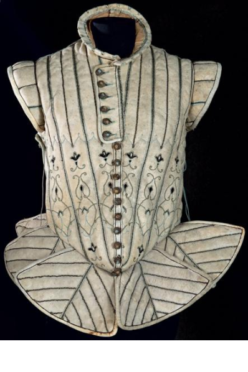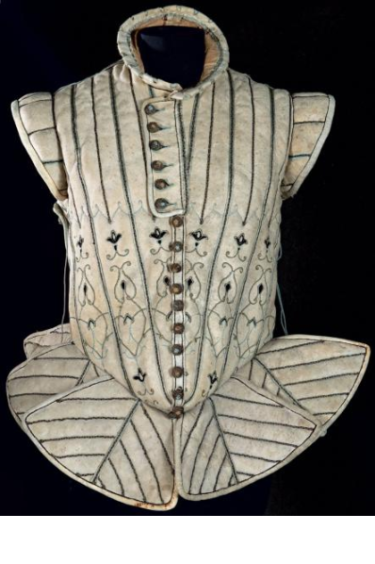Sold by French auction house Thierry de Maigret in Paris last month was a striking 16th Century men’s leather doublet, or in their words, ‘très rare pourpoint de gentilhomme en chamois brodé, France, vers 1580-1600’.
If you have followed the story of the circa-1620 men’s silk doublet, or jacket, in Perth’s collection – which won the UK Award for Conservation in 2007 – you will be aware that such things are extremely rare. Perth’s doublet is thought to be a unique Scottish survivor. I think there is one comparable example at the V&A. Perhaps we will see the doublets double-up in Dundee one day?
The earlier French jacket was made from natural chamois leather embroidered in azure satin application and golden thread braids.
The exterior was of cream satin covering a lining of linen, both spun and woven by hand. As with the Perth example, it was thickly quilted to shape out its ‘padded’ lines.
Richly embroidered, the doublet was fastened by six ‘active’ buttons below the neck. The lower buttons were for decorative use. There were also five side buttons with lacing eyelets tightened by silk cord. Buttons were trimmed in black or blue silk with gold threads.
Reinforced areas, such as the shoulders, used whalebone and straw knotted with yarn. Six padded basques were arranged in tortoiseshell style around the waist.
In exceptional condition for its age, and at one time the ultimate statement of fashion, the doublet was knocked down for the equivalent of £45,000, doubling pre-sale hopes, at which time the Louvre-based Musee des Art Decoratifs stepped in to pre-empt the piece for its collections, as they are permitted to do in France.











